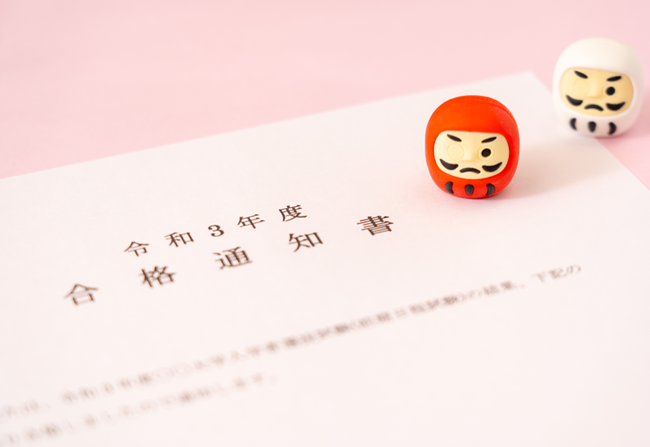
Sophia University and Gakushuin University have increased the number of applicants, and Chiba Institute of Technology has significantly increased the number of common test usage methods.
Looking at the 2021 admission applicants bulletin of the university newsletter ONLINE regarding the application status of individual private universities, not all private universities have a uniform decrease in the number of applicants. There are several private universities that have significantly changed the entrance examination system for the XNUMX entrance examination.The representatives are Waseda University, Sophia University, Aoyama Gakuin University, Rikkyo University, Gakushuin University, etc.Among them, Sophia University and Gakushuin University were attracting attention by introducing a new common test usage method, but as a result, the number of applicants for both Sophia University and Gakushuin University increased slightly.Rikkyo University is also increasing the number of applicants mainly by using the common test method.
On the other hand, the number of applicants at Waseda University and Aoyama Gakuin University is decreasing as expected.There is a very difficult question as to how to make a compromise between the idea of admissions reform and the intentions of the examinees, or how to stick to the idea without considering the agreement.However, the success or failure of entrance examination reform cannot be measured only by the number of applicants.It will take time to verify what kind of test takers support it and whether it is consistent with the direction of the reform philosophy that it is aiming for.
Chiba Institute of Technology is the most eye-catching.The number of common test usage methods is increasing in all faculties, and some faculties have more than XNUMX times the number of applicants in the previous year.Chiba Institute of Technology is exempt from the examination fee of the common test usage method (first half, middle and second semester) to support the entrance of the examinee due to the deterioration of the economic situation due to the new coronavirus.In other words, it's a free exam.It was a drastic measure, but it seemed to suit the students' intentions.This common test usage method is free, but if you are a little familiar with entrance exams, you may think that the cost of conducting the exam is low because you do not conduct the exam at your own university.
However, in reality, the flow of application data processing, pass / fail judgment work, acceptance announcement / notification, etc. is exactly the same as other entrance examination methods.There is no test implementation and scoring process, but there is a cost to run the test.In addition, the National Center for University Entrance Examinations is paid a grade provision fee for each applicant's grades.For these reasons, it is surprisingly difficult to realize free examination fees using the common test method, although it seems possible at any university.If you know the business in the university, it will be daunting just to think about the on-campus adjustment of free examination fee.
Reference site:
University News ONLINE 2021 Admissions Bulletin
https://univ-online.com/exam/
The number of successful applicants is expected to be about the same as last year for private universities as a whole, and the increase in the number of successful applicants for entrance exams within the year will also have an effect.
Continuing from last year, the number of private university applicants is likely to decrease, but the number of successful applicants is expected to be about the same as last year or slightly increase.It depends on the situation of each university, but in general, as the number of applicants increases, so does the number of successful applicants.Conversely, if the number of applicants decreases, the number of successful applicants will also decrease.However, last year the total number of applicants decreased, but the number of successful applicants increased.It is probable that the adjustment of the over-capacity rate at a large-scale private university has come to an end, and that the newly added faculties and departments (including new universities) have had an impact.
Therefore, the number of successful applicants is expected to increase slightly from last year as a whole at private universities.From this, it is expected that the magnification, which is one of the indicators of the difficulty of the entrance examination, will decrease.This tendency will continue in the future, and from the perspective of examinees, the competitive environment for going on to university will be eased year by year.
In addition, the number of applicants has been declining since last year for the late (second) entrance examination and the March entrance examination that can be applied from now on.As the adjustment of the over-capacity rate has settled down, the role as a control valve for the number of successful applicants has been lost, and the number of examinees who have already completed the entrance examination by the end of the year due to school recommendation type selection, comprehensive type selection, etc. is increasing year by year. It is probable that it was increasing.Although they passed the entrance examination within the year, it is expected that the number of people this year will be higher than last year.As mentioned above, even at national and public universities, it is thought that there will be an increase in recruitment of more than XNUMX people and an increase in the number of successful applicants.The actual number of university applicants who will take the general selection will decrease accordingly.If you add the number of passers of the private university entrance examination within the year, the number will increase further.
In other words, it is expected that the number of applicants for the late entrance examination and the March entrance examination that will be held will decrease from last year, and in some cases, there may be almost no students left.Especially in the case of universities and faculties with a large capacity, it is possible that the number of applicants will decrease this year, resulting in a significant decrease in the ratio.It may be a tailwind for the examinees who work on the general selection until the end.
- 1
- 2
